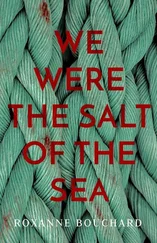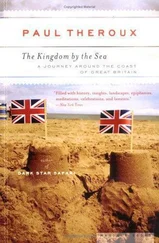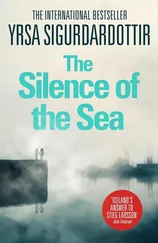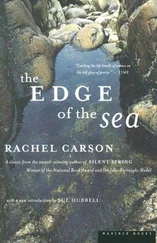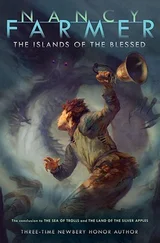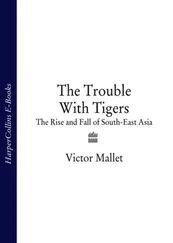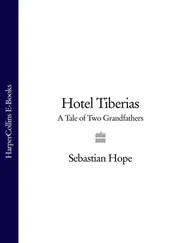
They say Sabah looks like a dog’s head – an observation that can only be made from a map or from space. Semporna was there on the lower jaw. (The rest of Borneo does not look like the rest of a dog.) My final destination, Mabul Island, was too small to feature.
I met Robert Lo, owner of the Sipadan-Mabul Resort, at the World Travel Market in London. He was there on the ‘Sabah – Borneo’s Paradise’ stand to promote his diving operation, to which he always referred as ‘SMART’. My first researches into South East Asia’s boat-dwellers had shown me that their distribution had been much more widespread than I had imagined and that Sabah was one of the places that might still have a completely maritime population. I asked him about Sea Gypsies, out of curiosity as much as anything, but he said, sure, there were lots that anchored near Mabul. ‘I let them use my island to build their boats, to have their weddings, to take their water. Their chief, Panglima Sarani, he’s a good man. I can introduce you.’ He gave me a Sabah Tourism Promotion Corporation brochure advertising the Regatta Lepa Lepa in Semporna, an event which purported to conserve and celebrate ‘one of the exotic culture’[ sic ], that of the Bajau Laut. My plans had found their focus.
Naturally I had doubts about how authentic such a pageant might be, and they strengthened hourly from the moment I was handed the STPC press-pack in Kota Kinabalu. I would be wearing neither the ‘one of the exotic culture’ T-shirt, nor the Regatta Lepa Lepa baseball cap. Later, on the drive from Tawau to Semporna, I had cause to disbelieve their promotional map of the state.
It was the sort of cartoon map that is handed out at the entrances to theme parks, portraying an enchanted grove brimming with attractions. There were happy climbers on Mt Kinabalu and happy tribespeople waving from their long house and happy divers at Sipadan. Even the wildlife was happy, charismatic mega-fauna peering out from amongst the florets of a forest that covered the whole state. As the minibus left Tawau, I waited for the jungle to start, but it did not; oil-palm plantations spread as far as Semporna.
The Regatta Lepa Lepa was indeed as contrived a piece of hokum as I have ever seen. Not a single Bajau Laut person took part. The lépa-lépa is their traditional houseboat, and there had been several examples on parade for the beauty contest, but none was owned or lived on by a Bajau Laut family. The winning entry had been commissioned by the STPC from a boat-builder on Bum Bum Island. There was no doubting the skill of the wright, nor the authenticity of the craft’s beautiful form, but using the decorated sail as advertising space for his business detracted somewhat from the overall effect. The other events – various boat races, tugs-of-war and catch-the-duck – left me cold.
Corporal Ujan of the Marine Police called me over to their office. I had had a couple of beers with him on my first night in town. It was good to see a familiar face amongst all the uniforms. Security had been ‘beefed up’ for the Regatta. Semporna had been visited twice by raiders from the Philippines within the last month. Ujan had important news.
‘You know the Pala’u man you were looking for?’ I had been told over dinner in Kota Kinabalu with the director of the Bajau Cultural Association, Said Hinayat, that I should not call the Bajau Laut ‘ Pala’u ’ as it was insulting. Sensibilities in Semporna were not so delicate. ‘That’s him. That’s Panglima Sarani over there.’ Ujan pointed to a jetty not fifty yards away. ‘He’s the old man sitting down mending his fishing net.’
There were two figures on the jetty working on the net. All the doubts and worries that had accumulated along the way on my journey to this point – questions about whether I would be accepted, could communicate, endure – all would be answered in the next few minutes. I stepped onto the decking. Neither looked up at my approach. They were both old, grizzled, and the one facing me was small and looked frail, until I was close enough to see the sinews standing out on his forearms. I thought he must be Sarani – the other had a broad back and powerful shoulders and seemed younger in his body. They were both wearing sleeveless shirts and blue baggy fisherman’s trousers that fasten at the waist like a sarong.
I spoke his name. The man with his back to me turned. He did not seem surprised to see a white man who addressed him in Malay. I squatted down beside him and looked into his weatherbeaten face, his hair stiff with salt, skin almost as dark as his eyes, his lips stained red with betel-juice. I introduced myself. I explained that I was interested in the Bajau Laut and their life at sea. Corporal Ujan and Robert Lo had both mentioned his name. He was going back to Mabul? In the morning. Could I go with him? The success of my journey depended on the answer and I hesitated to ask the question. Sarani showed no hesitation replying ‘ Boleh , can.’ He returned my smile, showing his two remaining blackened teeth. We made a rendezvous at the Marine Police post for the following day. I left him to his work and returned to my cheap hotel room.
Packing is like trying to tell fortunes and I picked over my belongings like a soothsayer reading the fall of prophetic bones. I tried to cast my immediate future, to imagine its situations, its practicalities, and provide for them with objects, but I had not even seen one of their modern boats yet. Said Hinayat had told me much about the Bajau in general and he disabused me of the notion that the Bajau Laut still lived on lépa-lépa , but he could not prepare me for what lay ahead, never having spent any time aboard a Sea Gypsy boat himself.
‘Of course “Sea Gypsy” is a misnomer,’ he had said. ‘They are not a Romany people.’ I pointed out that neither were sea-horses horses, but were so called in the vernacular because they resembled a more familiar land animal. ‘But names are important. We Bajau call ourselves the Sama people. So the Bajau Laut, the Sea Bajau, are properly called Sama Mandelaut . They are the only Sama with the tradition of living on boats.’ The other Bajau, House Bajau and Land Bajau, had never been boat-dwellers, although they had arrived in Sabah by sea from their home islands in the Philippines. Their migration started in the eighteenth century, and continues to this day. The Land Bajau are rice-farmers and were among the earliest migrants. They settled inland around Kota Belud and have become known as the Cowboys of the East because of their horsemanship (so say the STPC brochures). The House Bajau live in stilt villages on the coast and islands. They are fishermen, but do not live on their boats. In recent times they have become cultivators of agar-agar seaweed. Many Bajau Laut, he said, had now settled in houses and were integrating with land-dwelling Bajau groups.
Said could not say how many Sama Mandelaut still followed their traditional way of life. The Bajau Cultural Association had other objectives. He had just come back from Zamboanga in the Philippines, scouting locations for the third biannual Conference on Bajau Affairs. There was talk of a peace deal between President Ramos and Nur Misuari of the Moro National Liberation Front, but Mindanao and the Sulu Archipelago remained dangerous places. As a politician, Said was immensely gratified by the international attention. He had met the American Clifford Sather, the leading anthropologist in the field, at the first conference in Kota Kinabalu. The second had been in Jakarta, attended by experts from Japan, Europe, Australia and America, one of whom estimated that the Sama-speaking population of the Philippines, Malaysia and Indonesia might total thirty million. ‘You know they have a Bajau Studies course at Osaka University?’ Our conversation had been punctuated by the incessant ringing of his mobile phone.
Читать дальше


